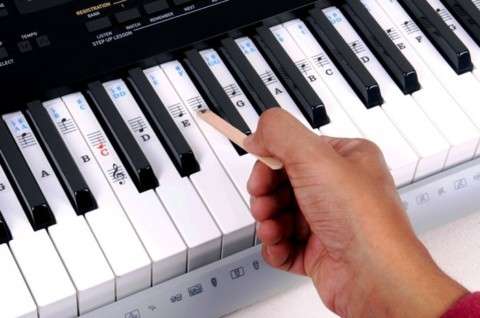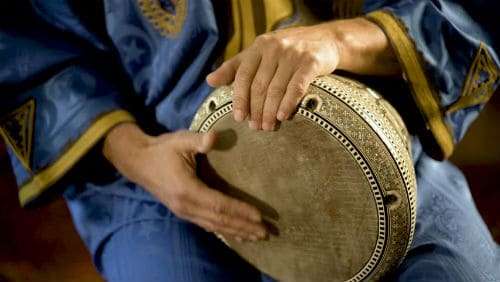How to remember chords from the beginnings of famous melodies
It doesn’t matter what the reason is for the urgent need to learn chords by heart. Perhaps you need to show off your skills in front of your musician friends. Or, what’s much worse, a solfeggio exam is just around the corner, and you can’t distinguish a triad from a quartet-sex chord—a crime under the criminal code, according to your theorist. Therefore, the chances of writing a dictation well or recognizing a chord progression are close to zero.
But maybe you are just interested and want to learn them for yourself, for general development.
To begin with, we can recommend studying a similar article on the Music-Education resource, which examines easy memorization of the intervals at which popular melodies begin. After all, it is impossible to study a house without becoming familiar with the principles of the structure of individual parts of its structure. So it is here: an interval is one of two or three bricks that, when built correctly, turn into a house-chord.
Let’s give an example: A major triad is constructed like this: a major third plus a minor third. If you confidently recognize two thirds in a chord, and the first of them is major, then the chord will turn out to be a major triad.
If you have already studied the materials in our music class, you have learned some of the basics and names of chords. If these strange terms are new to you, then we briefly recall the basic information.
The chords are:
- Major or major – the bottom brick of which is the major third, and the top is the minor.
- Minor or small – everything is exactly the opposite, below is the minor third, etc.
- Inversions of triads are divided into sextaccord (the first and last degrees form the sixth, the lower interval – the third) and Quartz (the same sixth around the edges, but the lower interval is a fourth).
- Ascending (sounds are built from bottom to top) and descending (sounds are built from top to bottom).
- Septaccord (the extreme sounds form a seventh).
I would like to clarify that by chord in the table below we mean a sequential production of sounds, rather like an arpeggio. But with the help of listening to chords in this way, they are remembered more easily than three or more sounds played at the same time.
| Chord name | Songs |
| Major triad | ascending“Mountain Peaks” (Rubinstein’s version), “Belovezhskaya Pushcha” (from the third note)Descending“Song o captain” – (beginning chorus), “Euridice, Scene III: II.”A te, qual tu ti sia” J. Kacchini |
| Minor triad | ascending“Moscow Evenings”, “Am I Guilty”, “Chunga-Changa”Descending“I asked ash” |
| Expanded major triad | ascending“March of the Merry Children”, “Prelude” by I.S. Bach |
| Major sixth chord | ascending“On that highway” |
| Minor sixth chord | ascending“Ave Maria” by G. Caccini (Second movement, development, 1 m.58 sec. playback), “Das Heimweh D456” by F. Schubert |
| Major quartersextchord | “Concerto in A Major for Basset Clarinet: II. Adagio”, “Trout (The Trout)” by F. Schubert (first there is a broken line at intervals ascending chord, then immediately – descending) |
| Minor quartersex chord | ascending“Holy War” “Clouds”, “What Progress Has It Come To”, “Forest Deer” (beginning of chorus), “Moonlight Sonata” and “Piano Sonata No. 1 in F Minor, Op. 2, No.1: I. Allegro by BeethovenDescendingL’Eté Indien (Repertoire by Joe Dassin, the chord runs as the leitmotif of the backing vocals, then in the main theme of the soloist) |
| Seventh chord | “Steppe and steppe all around” (in the words “the coachman was dying…”) |
This is just the tip of the iceberg – a small table thanks to which you can easily remember how a particular chord sounds. Perhaps over time you will be able to assemble your own collection of musical examples, confidently recognizing harmonies in familiar or new works.
Instead of conclusion + Bonus
If you try to compile a comic hit parade among chords, then the undisputed winner will be not the lyrical and melodious minor triad, but its second inversion – the minor quartet-sex chord. It was readily used by authors of patriotic music and romances, classics and contemporaries.
And there are also works, after analyzing which you will probably find any of the existing chords. Such an immortal creation is, say, “Prelude” by J. S. Bach, which so haunted the generations following the composer that it was immortalized twice: as a separate work and as one of the most beautiful versions of “Ave Maria”. 150 years after writing the prelude, the young Charles Gounod wrote reflections on the theme of Bach’s melody. To this day, the ingenious combination of many chords is one of the most popular classical melodies.
Bonus – Cheat Sheet



